Disclosure: Meeple Mountain received a free copy of this product in exchange for an honest, unbiased review. This review is not intended to be an endorsement.
Shem Phillips and the Garphill Games line of products have been incredibly successful over the last 5-7 years, even if some of the games have bounced off of me, I really enjoyed the 2019 release Circadians: First Light, which I bought last year.
A second edition of Circadians: First Light (featuring different art from the original) was announced around the time that a crowdfunding campaign began for the newest game in the Circadians family, Circadians: Chaos Order. What really caught me with Chaos Order: the overview seemed to be a completely different style of game than First Light.
In First Light, players have dice, work on an engine, deal with various round-specific events, and mostly mind their own business behind a screen that allows for players to program their actions. There is certainly some interaction, mainly in the sense that certain actions can often be taken by only one player in a round, and if the action you wanted is blocked, you’ll have to pivot.
First Light was fantastic; despite some minor quibbles, it delivered a solid, heads-down experience. But the idea of Chaos Order was really intriguing—a wargame/area control experience with no dice (as it turns out, basically no dice, which we will get to) with a mechanic that splits the game’s economy down the middle: a partially open economy, and a partially closed one.
This economic mechanic, which allows players to set prices to take actions every round, limits the number of actions a player might be able to take, especially in the early rounds.
Even more interesting: six asymmetric Factions, some of which were featured as trade partners in the original game. Now, instead of negotiating, it’s all-out war!!
I had a good feeling just reading the rulebook. Halfway through my first play, I knew it: Chaos Order is legit!
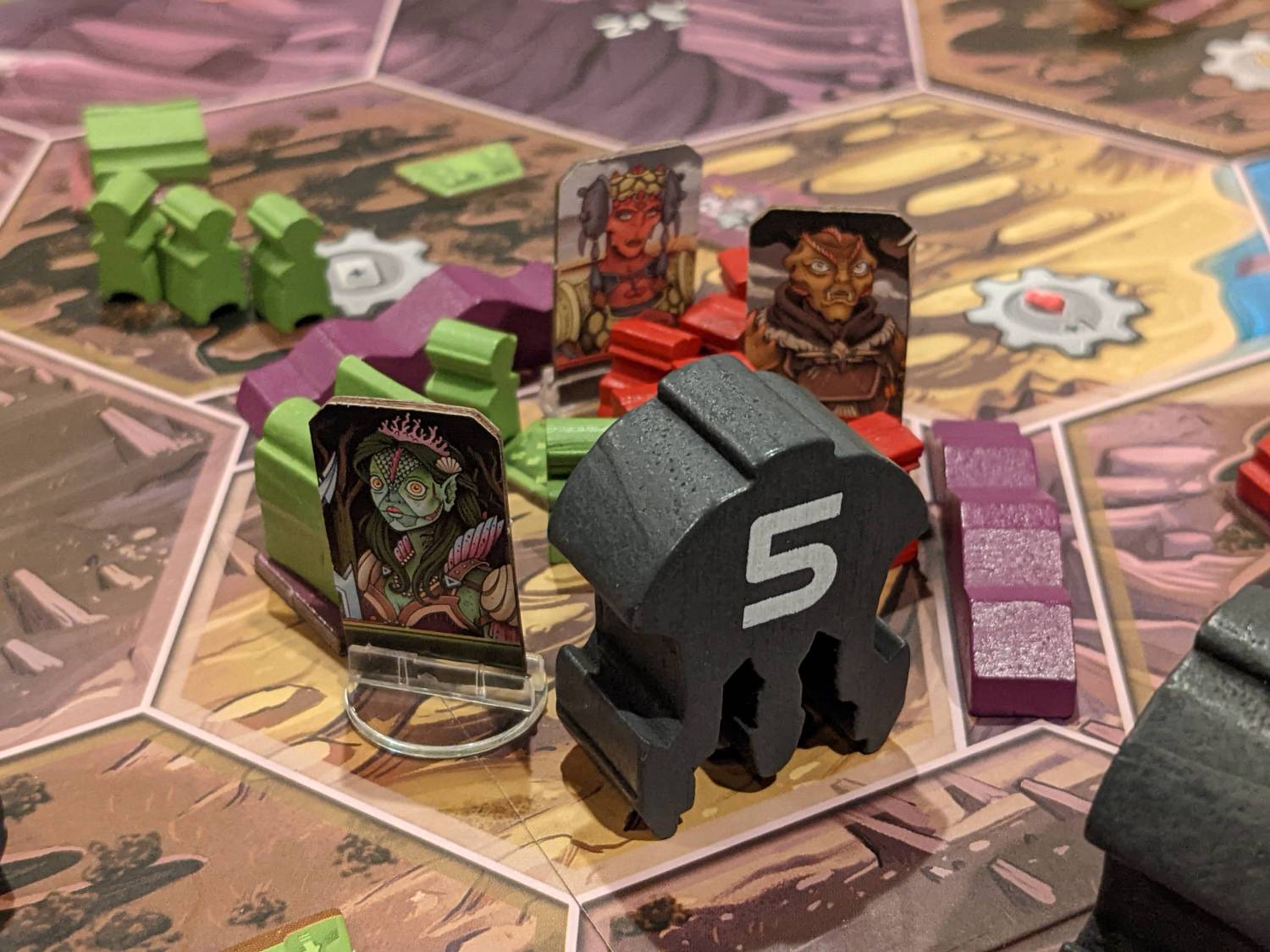
Forget What You Know
My only main issue with Chaos Order is that there is no real story that carries over from game to game. First Light and Chaos Order live in the same world, but otherwise, their arcs are completely different.
That means that almost nothing from the first game allows someone who played that game to understand how the second game works. Sure, energy is the main resource, and gems are still really valuable. Oh, and the Circadians (humans) are back in this game as a Faction, so you will recognize some faces from First Light.
A round of Chaos Order looks like this: in the Set Prices round, each active Faction (of the six choices in the box) will set the prices of one of the five actions available: Discover (research), Build, Harvest, Recruit, Move. Using a small selection of pricing tiles, each player will price the action they want to do most, which allows that Faction to take that action for free.
Each other Faction can take the action by paying some amount of energy to the Faction that set the price, or choose to pass. Often, this means paying a price to a player, and a price to the bank, then executing an action based on which column their research marker is in for that action. The better the research, the better/more efficient the action.
After prices are set, all Factions execute their actions. Discover lets players make their actions more powerful. Harvest yields resources. Recruit moves troops through your training pipeline and gets them onto the battlefield, while Move allows for players to move groups of troops around the small terrain map.
Build allows players to get three types of buildings onto the map, and just like Terra Mystica, placing those buildings reveals income on that player’s board that will be collected at the end of each round. Factions have to build buildings on top of Foundations; Foundations also come from a player’s mat and reveal ongoing powers available for the rest of each game.
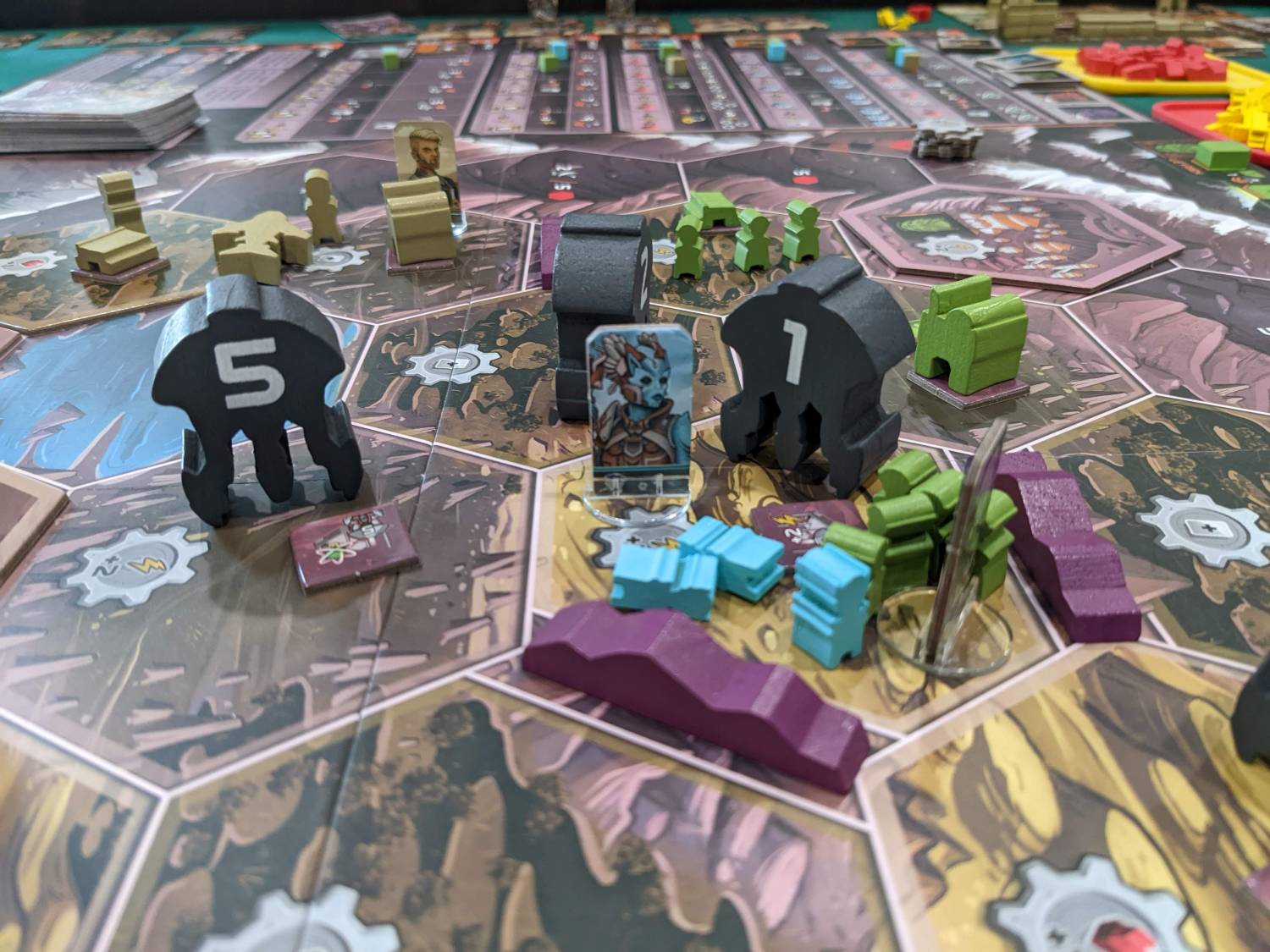
Area, Control
The map of Chaos Order is small, which means conflict is a guarantee. There are hexes, Relics, terrain types, Bases, even Tunnels used in 4- and 5-player contests so that even when it seems like you might be far away, you are closer than you think to each Faction.
Controlling hexes that contain Relic tokens is one of the win conditions. Six large Relic tokens will be scattered on the map to begin play. This also puts a big bullseye on each token, because they are numbered: in round one, players can score big by securing the hex holding the #1 Relic token, and so on.
If a player ever holds all the hexes containing the remaining Relics on the map, they automatically win the game. (This element gave me that Root feeling—winning by Dominance is hard, but if you control enough of the map, the game is yours. This also means that every Faction is always in the game. Even if one Faction took the first four Relics, another player can achieve victory!)
Factions begin the game with a little bit of room to operate. But not much. Setups allow for a Faction to basically sit next-door to your own Regions right from the jump. This is a combat game, friends, plain and simple. There is a lot of nuance to combat, thanks to the Tactics cards which are vital to every game of Chaos Order.
Tactics cards are fantastic. They provide varying stats to alter combat, but they also have powers that activate in various action phases, too. I love these cards, and playing them at just the right time is so important. Many of them break the rules of various actions and are discarded after use. If a Tactics card is used for a battle, they provide 0-5 points in the combat categories, or they can be used as a bluff to get your opponent thinking that you might have just played one.
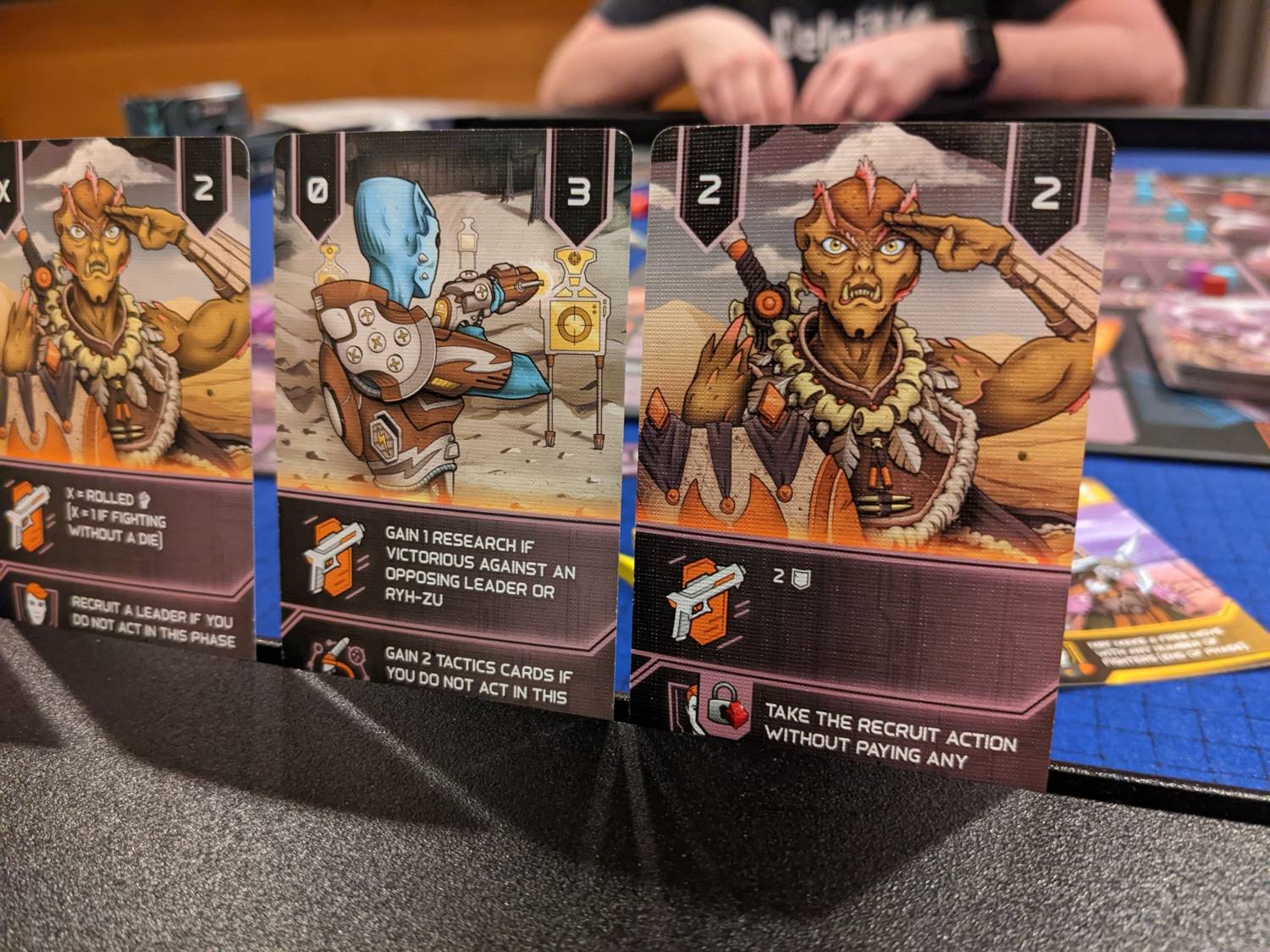
Strength, Attack, Defense…Casualties?
Combat in Chaos Order is interesting stuff.
It doesn’t appear much early on, unless someone from one of the warring Factions (Oxataxa, Jrayek, AI) tries to score some early points by taking advantage of market opportunities.
But as games of Chaos Order progress, combat shows up everywhere. Deciphering the combat mechanic will be hard for some players, because of how Chaos Order separates winning from suffering wounds in combat.
You see, every battle in Chaos Order comes down to 3 vital stats: Strength, Attack, and Defense.
Whichever Faction ends a battle with the highest Strength is technically the victor. Then, we have to address casualties: look at each Faction’s attack (represented by what looks like a target scope) and compare that to the other Faction’s Defense.
Let’s say the Circadians had a Strength of 12, and the AI had a Strength of 10. Circadians will win the fight. But then let’s say the AI had an Attack of 8, and the Circadians had a Defense of 4. That means that the AI “wounds” 4 Circadians Fighters (the game’s name for troops), sending them back to the training facility for future battles.
Sometimes, a Faction won’t wound anyone, meaning that the losing Faction still has to vacate the premises. If they chose to retreat (one of the six actions on the Combat Wheel), all fighters remaining after counting wounds can move to an adjacent hex; a comfy way to set up a future battle by keeping those soldiers alive to fight again, maybe in the same round!!
And that Combat Wheel? Yep, I got that Scythe feeling too, but with a more robust set of choices because of the choices on the wheel. There is a base stat printed on the wheel with a value of 1 and 1; these numbers line up with the various three stats I mentioned before, in different ways. Sometimes, you want a high Strength number and a decent Attack number.
Other times—particularly if you are the AI—you want to come into combat with 4+ Fighters, and no Leader; this may grant your Attack stats a major boost. And other times, you can spend a gem to roll one of the combat dice, which can add Strength and maybe a little Defense to the proceedings.
I love the combat in Chaos Order. It’s also the thing that slows gameplay down the most.
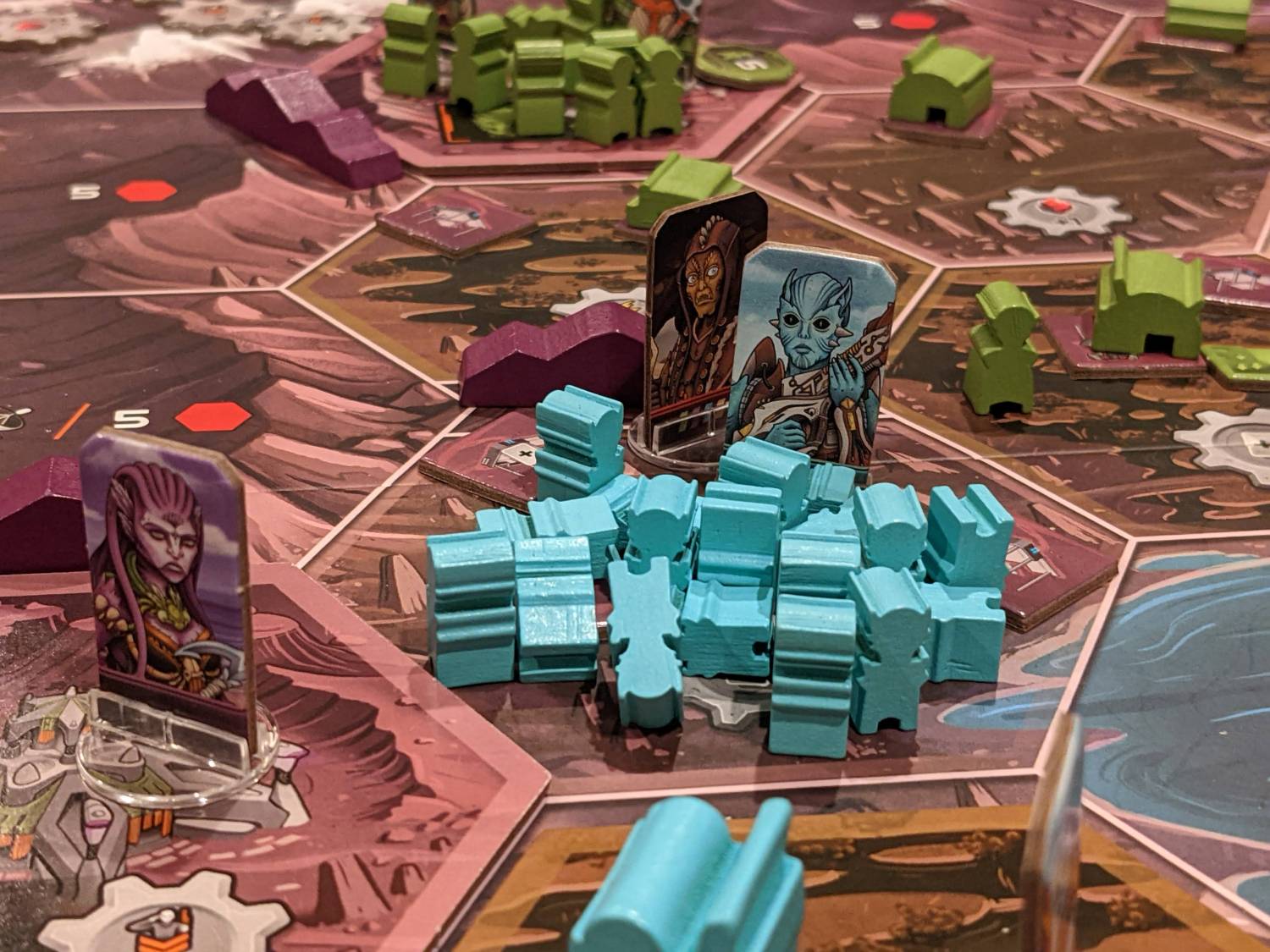
Stay a While
Games of Chaos Order ranged from 2 to 3.5 hours in my plays. But you’re going to want to play at either four or five players because there’s just more going on, which means 3-4 hours is probably the best way to plan.
At two or three players, the map is just too empty for my taste. It also led to a somewhat easy win for me in my play as the Circadians. At 3 players, competition for area control was light, and the Circadians can win by having control of 6+ hexes at the end of rounds to trigger their scoring condition: upgrading Attributes, the special powers each Faction has over every other Faction in the game.
In the first two rounds of that game, I had control of five hexes, and three of those hexes had my Strongholds, buildings that also grant the Circadians +1 for their region count.
This means I had 8 regions during the Get Income phase; that granted me the chance to upgrade not just one, but two of my attributes at the same time. In that same round, I also took the second Round Relic; when added to my first Relic, I had just scored 75% of the points I needed to win by the end of round two!
The other two players ganged up on me in the third round, but by round four, things had stabilized and I took a narrow victory. I was almost superpowered at that point: the attributes that I upgraded included making my Fighter strength even higher (and for the Circadians, it already starts higher than the other Factions), which made winning battles a little easier.
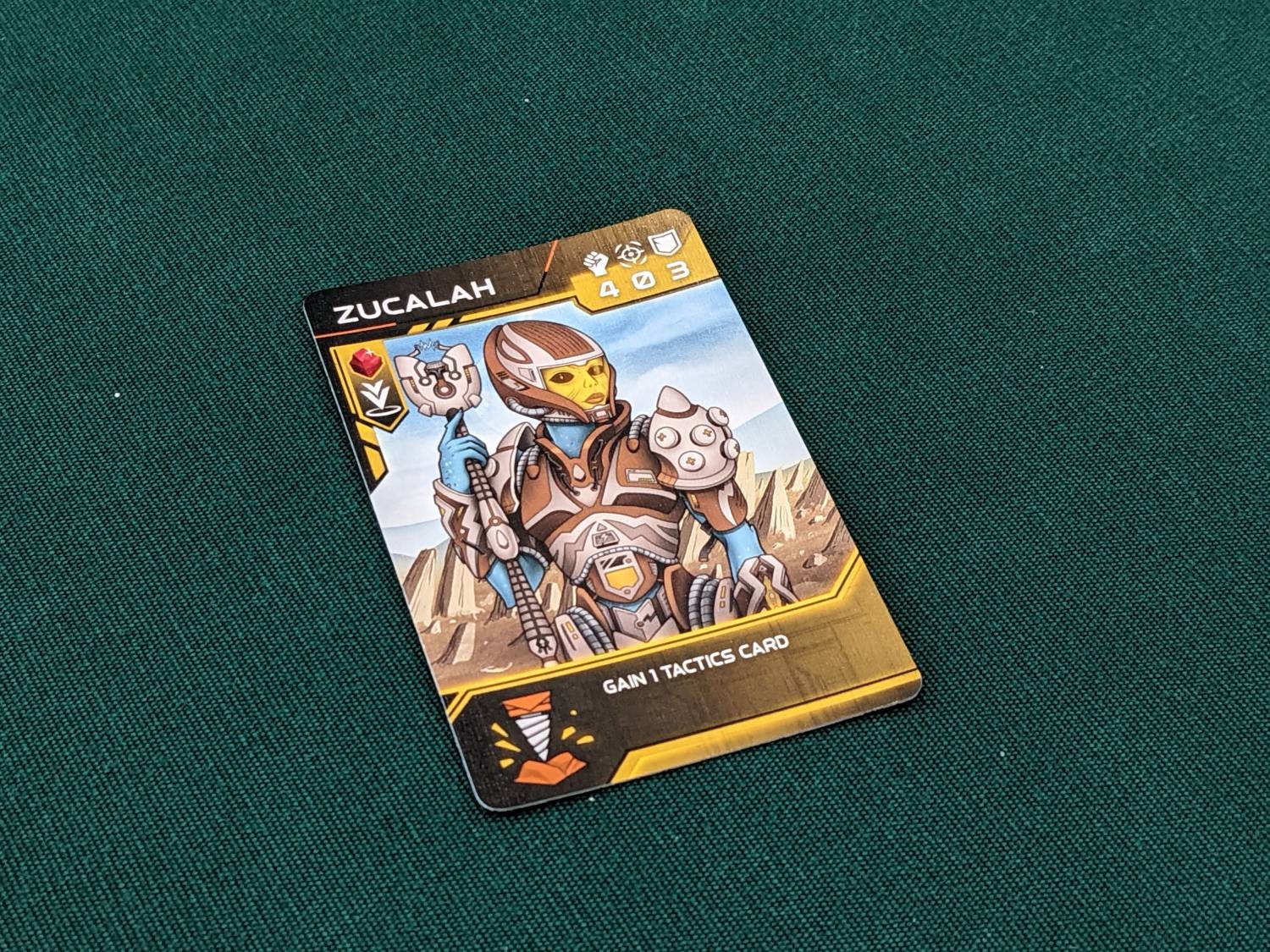
The Factions: Amazing
The design process, and what may have changed during development, really fascinates me about Chaos Order. (See my interview with the game’s designers for more on this!) The Factions are just so well balanced in this game, as balanced as any that I’ve played in the last couple years.
I’ll reference Root here again because the best part of that game is how different the Factions there operate, and how close games of Root tend to be amongst experienced players despite how different their respective missions are. (Add Crescent Moon to this list of games with asymmetric factions and how well balanced each one is against the other.)
In my first game, the Oxataya won by scoring their 9th and final point, in the same round when the Zcharo had scored the 20 points they needed to win if the game got to the Check Relics phase. The Jrayek only needed one more victory over a Faction with their Leader on the map, while the Leyrien ended with 13 Fame points, one shy of victory.
Now, like games of Sidereal Confluence or even Crescent Moon, the owner of Chaos Order will have to teach both the base game’s rules, the Faction rules, and the way each Faction seems to break each core rule in the game.
A minor set of examples:
- All Factions start from a base tile on the outer portions of the map…except for the Circadians, who have a Jump Ship that serves as a mobile base, meaning they can show up almost anywhere and move over Mountains, which normally can’t be traversed.
- All Factions take the action in their column of research…except the Zcharo, which gets a juicier version of the same action because they are smarter than every other Faction.
- All Factions can pay to take a secondary action…but for the action that the Oxataya priced, they get to take the secondary action for free.
Now, this isn’t game-breaking in the same way that Marco Polo II’s player powers break the game, but they are close. That means that understanding how every other Faction works in Chaos Order can be quite difficult. This is especially true at higher player counts.
Also, the rulebook doesn’t provide a recommended list of Factions based on their difficulty level, which I think is a miss. For example, I would not use the Circadians in a first play of Chaos Order. The way their base moves, the fact that they have so few Fighters in play, and the way Intel cards work, all of this is difficult to parse without having ever seen the game before.
The same is true for the Leyrien. This Faction’s scoring is also difficult to comprehend if you are not playing as the Leyrien. Also, all Swamp terrain hexes are adjacent for the Leyrien, but it doesn’t quite feel right that they can just pop up all over the map, logistically speaking. They are swamp people? Great. So, they can teleport, too?
Now that I have a few plays under my belt, I think AI, Zcharo, and Oxataya are the easiest Factions to explain and take on as a new player. The AI gets points for wounding Fighters. The Zcharo scores points for doing research, and just doing research at all means actions get easier all game long. The Oxataya wants to be the victor in any battle they take part in. Also, the Oxataya Attributes are very easy to explain to everyone else at the table.
One negative about the Factions: I can’t believe the design team thought that naming the AI as AI would work. Every single time people see Chaos Order on the table, they assume that AI is an automa, a non-playable entity built in to drive up player count.
Nope! It’s a playable Faction. But it has the worst name. I would have instead called the AI “Robots”, “Sentry Forces”, “The Empire”, damn near anything besides AI.
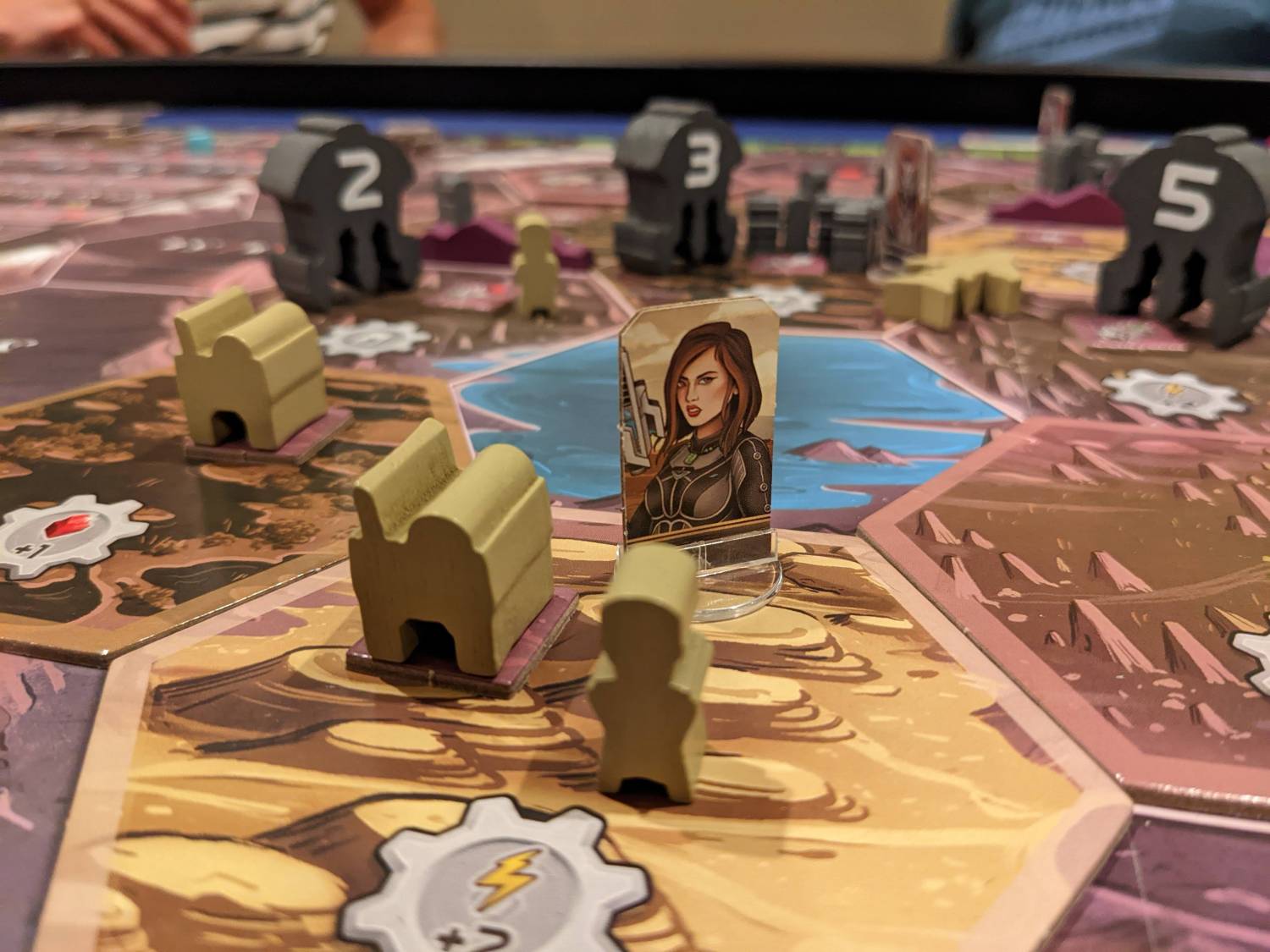
I Love It
I doubt that Garphill Games is developing five more games like Chaos Order, but I am so impressed with this game that I hope they do build more content for this game at a minimum.
The Set Prices mechanic is genius, full stop. Like the Timeline in Carnegie or some of my other favorite mechanics in recent years such as the tech tree in Beyond the Sun or the Market board in The Red Cathedral, setting the prices for each action in a round is just fun. Paying other players to take actions, or getting paid to take an action you have priced, is always interesting.
This, paired with a robust, mostly dice-less combat system, really landed well with others during my plays. Using each Faction’s advantages to build strategy is a blast, and games are always close.
The teach is quite a load for Chaos Order, so finding a group willing to play this multiple times is your best bet. This will also eliminate problems you will find when trying to play this at five players, four of which are veterans and one who has no idea what is happening around them.
Chaos Order is a keeper. Here’s to hoping that there will be a third game in the Circadians series, because I am loving what I have seen so far!


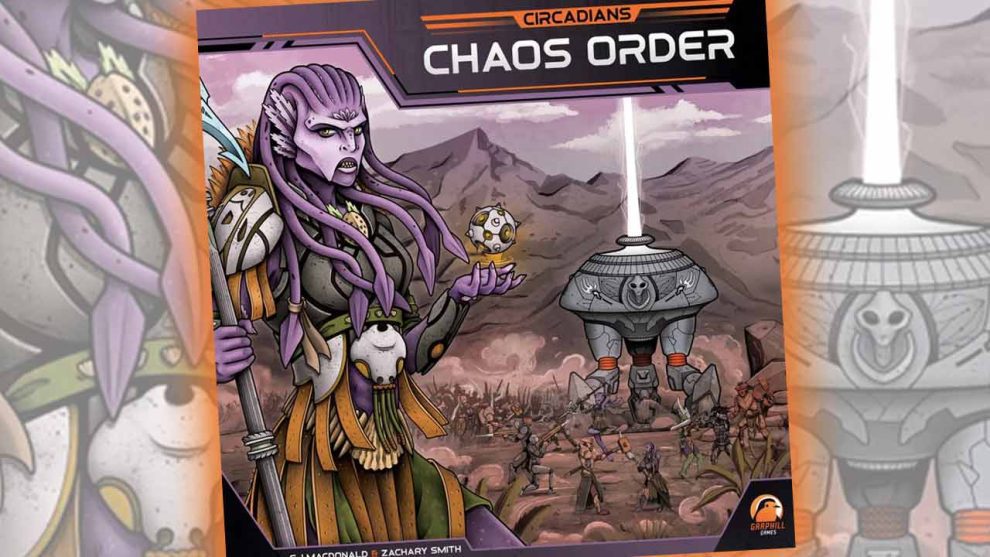

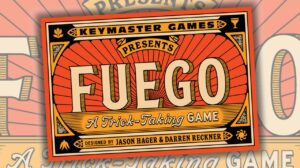
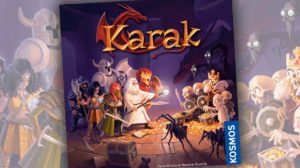






Add Comment